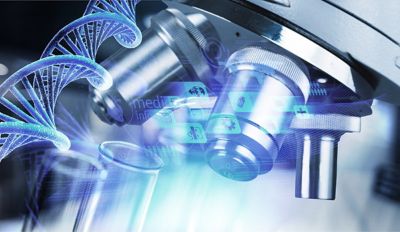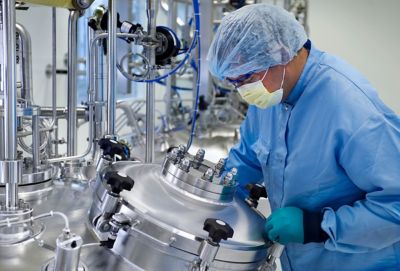-
-
Access Free Student Software
Ansys empowers the next generation of engineers
Students get free access to world-class simulation software.
-
Connect with Ansys Now!
Design your future
Connect with Ansys to explore how simulation can power your next breakthrough.
Countries & Regions
Free Trials
Products & Services
Learn
About
Back
Products & Services
Back
Learn
Ansys empowers the next generation of engineers
Students get free access to world-class simulation software.
Back
About
Design your future
Connect with Ansys to explore how simulation can power your next breakthrough.
Free Trials
ANSYS BLOG
April 10, 2024
Using Digital Twin Technology for Pharma
Digital twin technology is used across industries to provide real-time insights into processes and systems. But in the biopharmaceutical industry, where successful scaling from discovery to commercial launch requires the meticulous integration of engineering and biology, the dynamic qualities of pharma digital twins make them especially valuable.
Digital Twins, Explained
Digital twins are virtual copies of physical assets that provide insights into the performance of their real-world counterparts. They can represent a machine, process, or system and are used to improve decision-making by gathering and analyzing data as it happens. Digital twins give operators the ability to observe asset behaviors, both seen and unseen, and predict performance over the entire lifetime of the asset.
For example, a digital twin of an industrial engine would pull information from internal sensors to report on operational parameters and efficiency metrics such as temperature, vibration, and fuel consumption. It would also inform the operator when maintenance is required, if the engine is operating within regulatory standards, and link to other resources in the facility to coordinate scheduling and planning.
Unlike digital models or digital shadows, a true digital twin synchronizes the physical asset and virtual reproduction so there is a two-way data transfer between them. This connection generates insights that would be otherwise unavailable during the asset’s operating life.
Applications of Digital Twin Technology for Pharma
In biopharma, monitoring the drug production process is complicated by a factor that is uncommon in many other industries, which is the presence of living, growing, and dying organisms. Here, digital twins are used to monitor this dynamic environment in real time, ensuring the most effective manufacturing of innovative biological medicines.
Drug Discovery
Digital models help researchers develop new drugs faster by predicting how potential compounds will behave in cells before they are synthesized in the laboratory. These simulations make it possible to evaluate the safety and efficacy of drug candidates at the cellular level by incorporating multi-omics data to predict the effects of drugs on cellular responses over time.

Improving Clinical Trials
Clinical trials can be expensive and don’t always reflect the entirety of patient experiences. Digital twins enable researchers to track patients in real time to predict the clinical trajectory for each trial participant. This may include simulating the response of a patient who received the new drug therapy or placebo, which could signal a need to take early action for patients predicted to have a negative outcome, as well as helping reduce the scope and cost of each trial.
Pharmaceutical Manufacturing
Digital twins can identify the optimal conditions for controlled cell growth, periodically check the process to determine when to add buffer or culture media, and predict how the process will behave at scale. These virtual prototypes help to reduce the impact of both natural variations that occur when dealing with living organisms and can also mitigate the impact of unexpected process disruptions, such as a loss of feed gas.

The Benefits of Using Digital Twin for Pharma Manufacturing
Engaging digital twins in the production of medicines has many benefits, including faster development, increased ability to scale, and quality improvement.
- Speed to market: Digital twins accelerate the discovery, development, and production of pharmaceuticals by using virtual models to quickly test and validate new compounds against a variety of factors.
- Ability to scale: Digital twins help manage the complexities of working with living organisms by predicting how they will behave when scaled to commercial production.
- Product optimization: Digital twins use in-line checks to monitor critical quality attributes throughout the manufacturing process, enabling manufacturers to quickly implement improvements that yield better products and reduce the risk of defects.
The Challenges of Using Digital Twin for Pharma Manufacturing
Modeling in biopharma is complex because, as a biological process, the system is in constant flux. With cells constantly growing and reproducing, digital twins are tasked to monitor, analyze, and optimize dynamic events. In addition, there are strict regulations and standards for medicine production that digital twins are evaluating against — all while working to get quality medications to patients as quickly as possible.
Digital twin software supports biochemists and pharmaceutical manufacturers by integrating the complex models necessary to effectively monitor this frenetic environment. These tools, such as Ansys Fluent, Ansys optiSLang, and Ansys Twin Builder, work together to synthesize data across physics, providing a system-wide perspective that yields more informed decision-making.
The Future of Pharma Digital Twins
As digital twins become more prevalent in biopharma, they will continue to enhance process efficiency and improve product quality. Across discovery, development, and manufacturing, the confidence digital twins provide will help make advanced medicines more accessible and affordable — ultimately making better healthcare a reality for more people.